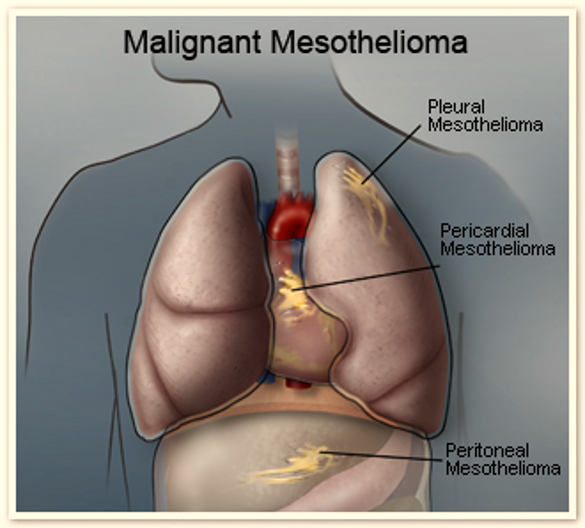Mesothelioma Benign and Malignant
Posted on Thursday, March 24th, 2016 at 9:17 am
As in previous articles, the causes of Mesothelioma and Asbestosis are closely linked to asbestos exposure. This article discusses the differences between benign and malignant mesothelioma.
Mesothelioma is a cancer of mesothelial tissue especially associated with asbestos exposure. Mesothelial tissue is peritoneal which covers most of the organs in the abdominal cavity.
Benign Mesothelioma
This is noncancerous tumors which grow at a slow rate and do not spread to distant organs in the body. These tumors normally develop in the abdomen. They grow as solitary fibrous tumors in a single mass.
When are large at about 7cm, they cause complications but hardly have any symptoms. Some symptoms caused are:
- Painful swelling of the joints and bones
- Low blood sugar
- Comas
- Seizures
They are common among young to middle aged women as well as among people aged in their 60s and 70s. However, benign mesothelioma forms in people without history of asbestos exposure.
Types of benign mesothelioma include:
- Benign cystic mesothelioma
- Well differentiated papillary mesothelioma
Benign Mesothelioma Treatment
Because of their size and nature of being a single mass; they are easy to remove surgically. This is even easier if they are small. Surgery often remedies the symptoms associated with the tumor. Most cases of benign mesothelioma do not come back.
Malignant Mesothelioma

Malignant Mesothelioma
This is a rare, asbestos related cancer. They are cancerous tumors. They grow as many small nodules. They form in a sheet-like nature. They affect the thin wall lining of the organs (mesothelial tissue/peritoneal). They are inclined to spread to other locations increasing the danger of cancer. They are made up of cells which grow uncontrollably. The cells infect nearby tissue and spread to other parts of the body. Despite the move from one organ to the next they retain the name of the original area they initially affected. For example, if they started as pleural mesothelioma and then spread to the abdomen it is still called pleural mesothelioma.
Types of malignant mesothelioma include:
Malignant mesothelioma treatment
Treatment improves survival and relieves symptoms. The common treatments are:
- Chemotherapy
- Radiation therapy
- Surgical resection
Because of the sheet-like nature of the cancer, it is difficult to remove by surgery. Surgical resection is used when diagnosis is in early stages.